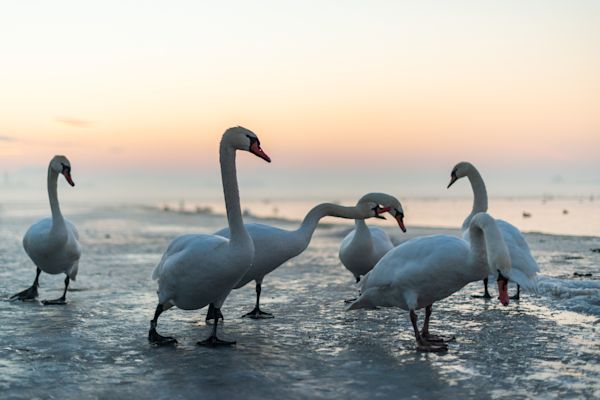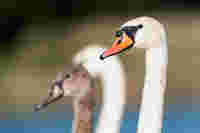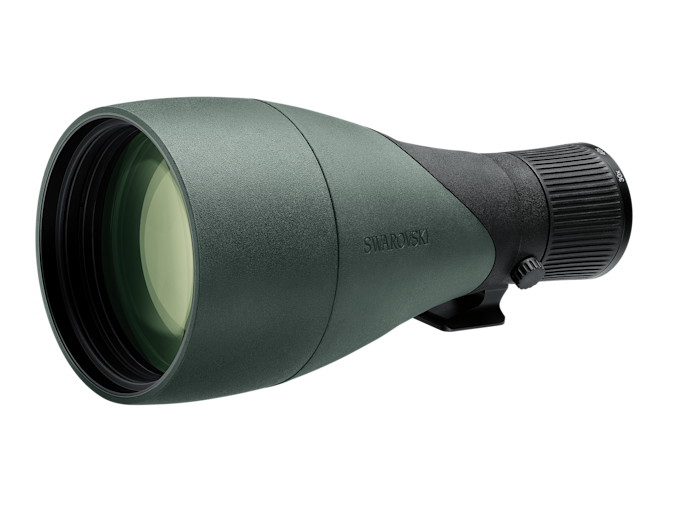Ornithologist Leander Khil has recently introduced you to five exciting species of European waterfowl in “Close up: European Winter Waterfowl – Part 1”:
Now get ready for more: Get to know five additional species, because in winter you might be able to observe these birds at the coast or near lakes with ease.
Have fun!

(Anser anser)
Greylag Goose
Greylag Geese are the default grey geese in Europe. They are rather common on the continent, especially in the northern parts. If you scan flocks of geese this winter, pay attention to the Greylag‘s bill color; while birds from northern and western Europe have orange bills, it is pink in more eastern birds. However, be cautious as the bill color may not be neither clearly pink nor orange, but somewhere in between, making this classification challenging.
Mute Swan
(CYGNUS OLOR)
Native to Europe and Asia, the Mute Swan has been introduced to other parts of the world for its elegant appearance. This giant is one of the heaviest flying bird species in the world, with exceptional males reported to weigh more than 20 kg. The regular weight is much below that, though. Some of the juveniles wear a brown plumage in their first winter, while others already have a white first set of feathers.




(Aythya fuligula)
Tufted Duck
This species can always be recognized by the feather tuft (especially long in males) on the back of its head. Tufted Ducks dive to search for food, both plants and small animals. Mollusks play a big role in their diet and it is believed that the spread of one tasty mussel species from the east was the reason for the Tufted Duck‘s range expansion to central and western Europe in the last 60 years.

(Cygnus cygnus)
Whooper Swan
This northern species reaches western and central Europe in winter. Its yellow bill-base makes it stand out among the usually more common Mute Swans. However, in some wetlands, big flocks traditionally spend the winter and then sometimes outnumber Mute Swans. Contrary to its quieter and more common relative, Whooper Swans are anything but mute!
Ferruginous Duck
(AYTHYA NYROCA)
Being one of the rarest ducks of Europe, it’s a pleasure for every birder to find this chestnut-colored gem among a wintering group of other diving ducks. At a distance, Ferruginous Ducks can also be a bit challenging to identify, but the rusty overall color, white rear end, oval head shape and white eye (in males) make a reliable combination of features.


About
Leander Khil:
Leander works in many ornithological fields and has written a field guide of the birds of Austria ("Vögel Österreichs"). Accompanied by his EL 42 binoculars and BTX spotting scope, he goes birding at Lake Neusiedl – Seewinkel National Park several times a week.
For more information visit his Instagram @leanderkhil and Facebook accounts.
















